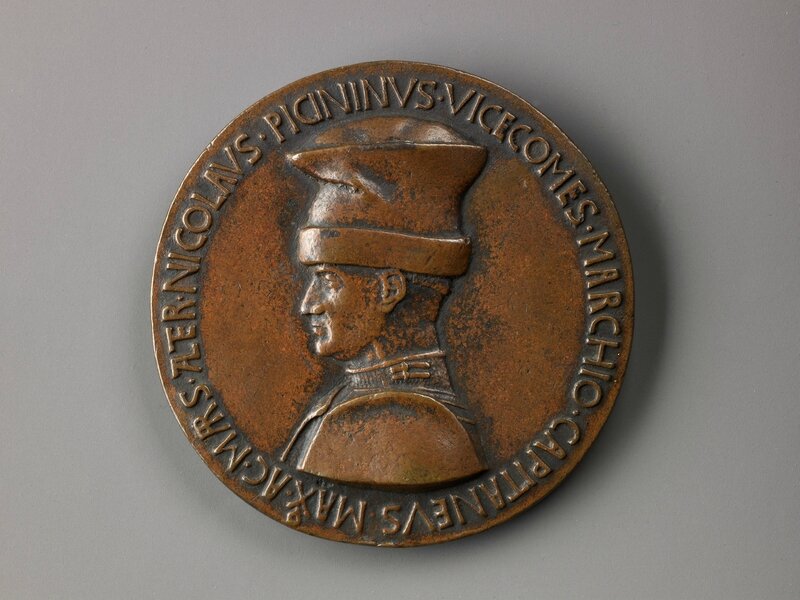Pisanello, Medal, model 1440–41 (possibly cast 16th century)
Pisanello (Antonio Pisano) (Italian, Pisa or Verona by 1395–1455), Medal, model 1440–41 (possibly cast 16th century). Bronze (copper alloy with reddish brown patina and traces of dark wax). Diam. 8.7 cm, wt. 255.97 g. Robert Lehman Collection, 1975; 1975.1.1304 © 2000–2016 The Metropolitan Museum of Art.
Active in Verona and the Italian courts, the celebrated master Pisanello left behind a significant legacy, including a large corpus of drawings and several paintings. He was also the inventor of the commemorative portrait medal. Inspired by Roman coins, with their portraits of rulers and allegorical representations on the reverse, the medals commemorated individuals or events and functioned as gifts and mementoes.
Niccolò Piccinino, his surname meaning the "tiny one," was one of the most accomplished condottieri (professional soldiers) in fifteenth-century Italy. He worked primarily for the Duke of Milan, Filippo Maria Visconti, who eventually adopted him, hence the addition of the name VICECOMES (Visconti) on the medal. The portrait is based on a drawing in the Louvre, the only difference being that the subject is wearing armor in the medal and civilian garb in the drawing.

/https%3A%2F%2Fprofilepics.canalblog.com%2Fprofilepics%2F1%2F0%2F100183.jpg)
/https%3A%2F%2Fstorage.canalblog.com%2F03%2F02%2F119589%2F96711876_o.jpg)
/https%3A%2F%2Fstorage.canalblog.com%2F11%2F31%2F119589%2F94773502_o.jpg)
/https%3A%2F%2Fstorage.canalblog.com%2F20%2F83%2F119589%2F94772815_o.jpg)
/https%3A%2F%2Fstorage.canalblog.com%2F26%2F72%2F119589%2F75604929_o.jpg)
/https%3A%2F%2Fstorage.canalblog.com%2F59%2F60%2F119589%2F26458628_o.jpg)




/image%2F1371349%2F20240403%2Fob_035d65_dp-1241-015.jpg)
/http%3A%2F%2Fstorage.canalblog.com%2F40%2F64%2F119589%2F75403027_o.jpg)
/http%3A%2F%2Fstorage.canalblog.com%2F00%2F58%2F119589%2F75402995_o.jpg)
/image%2F1371349%2F20240423%2Fob_b2fe42_telechargement-9.jpg)